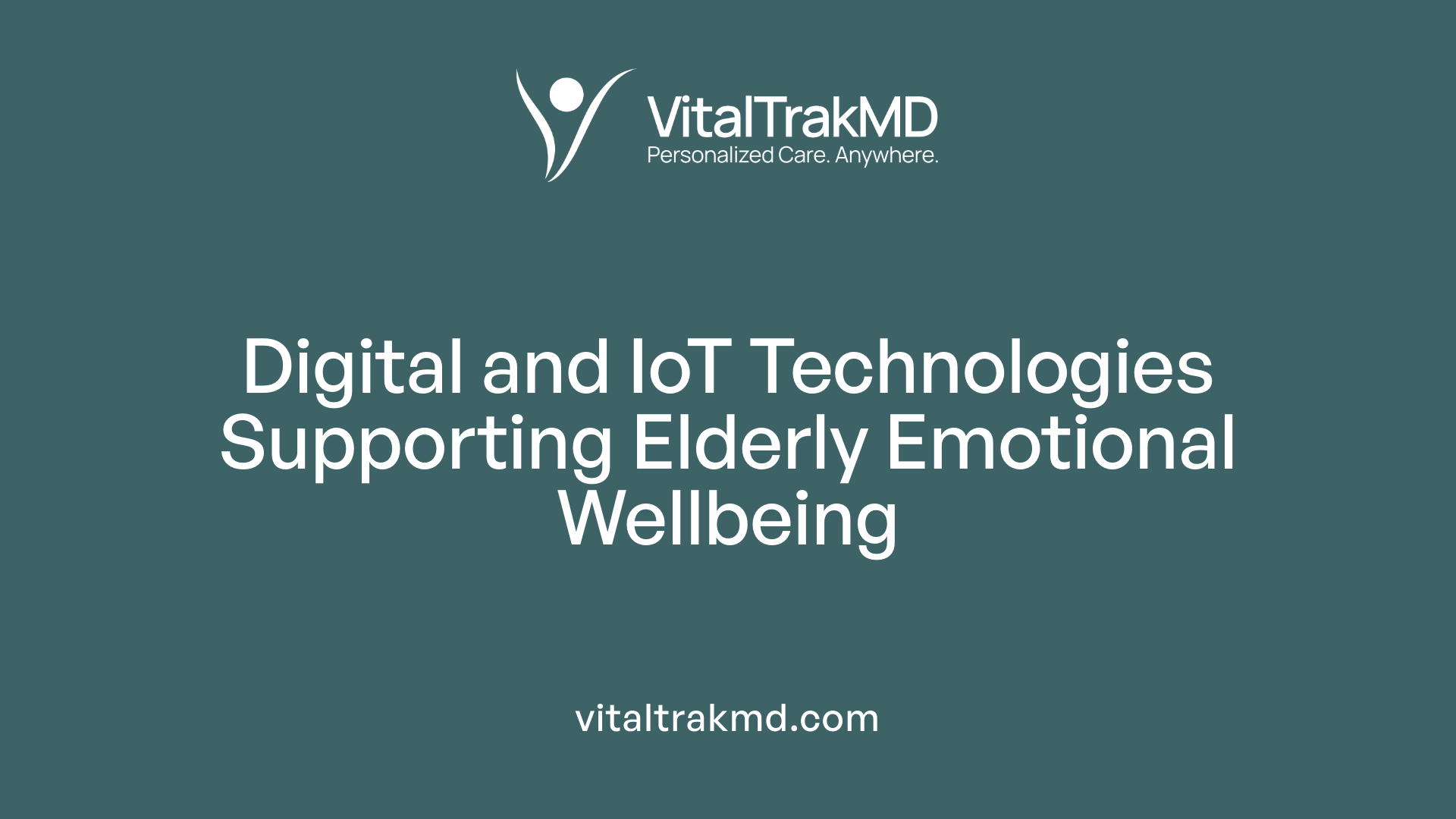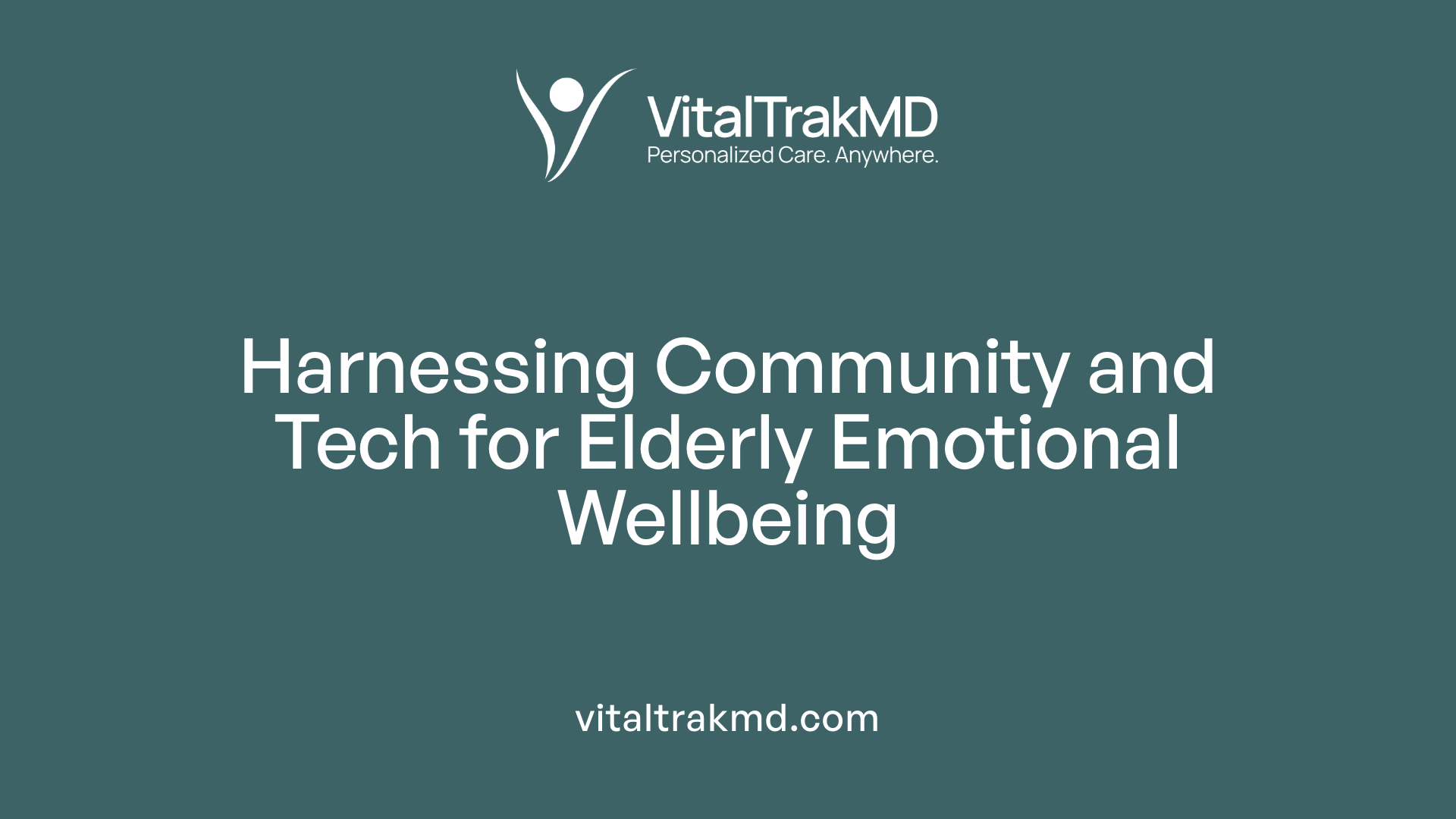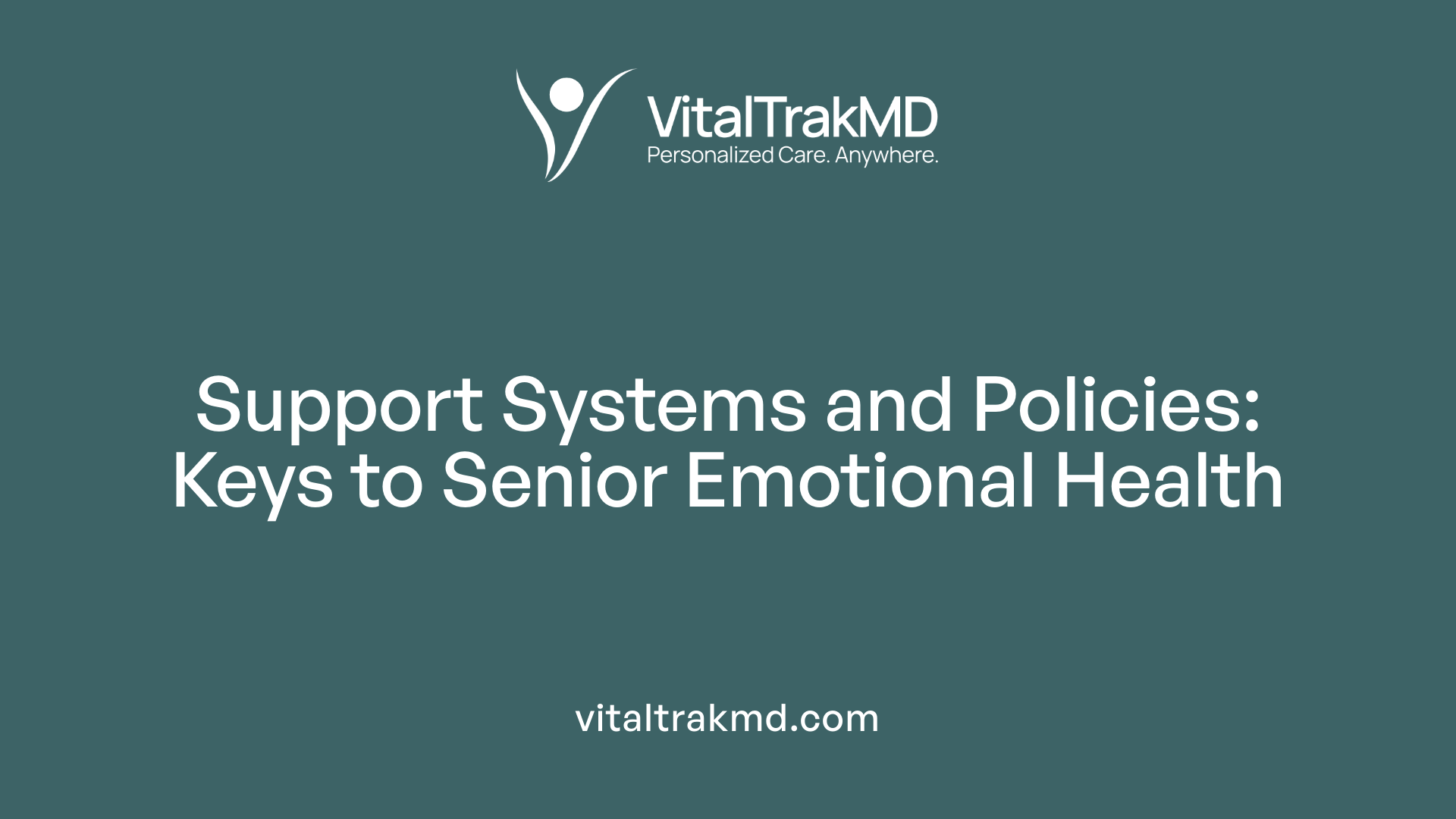How Hybrid Healthcare Supports Emotional Wellbeing in Aging Adults

Transforming Elder Care with Hybrid Solutions
As the aging population grows, so does the need for health care models that effectively support emotional wellbeing. Hybrid healthcare, combining in-person and digital approaches, offers promising strategies to address the multifaceted needs of older adults, fostering independence, social connection, and mental health resilience. This article explores how these innovative models underpin emotional health through evidence-based methods, technological advancements, community integration, and tailored support systems.
Efficacy of Hybrid Training Modes in Older Adult Mental Health Interventions
How do hybrid healthcare models support emotional wellbeing in aging adults?
Hybrid healthcare models, which combine in-person sessions with teleconferencing and digital tools, play a significant role in improving the mental health of older adults. These models integrate diverse resources such as online psychoeducation programs, community services, and remote monitoring technologies.
Programs like HOPE-FIT exemplify how such approaches promote mental wellness by blending physical activity, psychosocial support, and smart-home-based health monitoring. The use of digital literacy training and telehealth services helps address common barriers like social isolation and stigma associated with mental health issues.
Older adults benefit from increased access to support, which fosters independence and self-efficacy in managing their mental health. Interpersonal connections established through virtual group sessions and digital communication tools further strengthen emotional resilience. These integrated systems create personalized, scalable solutions tailored to individual needs.
Overall, hybrid models support emotional wellbeing by making mental health resources more reachable, reducing barriers to care, and encouraging active participation in health-promoting activities. They facilitate holistic care that not only addresses physical health but also promotes psychological resilience, ultimately improving quality of life for aging populations.
| Aspect | Description | Additional Details |
|---|---|---|
| Accessibility | Increased access to mental health resources remotely | Overcomes mobility and transportation barriers |
| Engagement | Combines social interaction with digital learning | Virtual groups and online psychoeducation |
| Support Networks | Enhances support from healthcare providers, family, and peers | Facilitates ongoing communication and community building |
| Personalization | Tailored interventions based on individual needs | Use of digital tools for monitoring and assessment |
This comprehensive approach underscores the value of hybrid training modes in fostering emotional wellbeing among older adults, supporting their mental health through adaptable and inclusive care strategies.
Supporting Aging in Place through Community-Based Hybrid Healthcare
 Hybrid models like Cambridge Village exemplify innovative approaches that support older adults in aging in place while maintaining access to comprehensive healthcare services. These facilities combine on-site primary care, physical therapy, home care, and rehabilitation services, creating a supportive environment aimed at fostering independence and safety.
Hybrid models like Cambridge Village exemplify innovative approaches that support older adults in aging in place while maintaining access to comprehensive healthcare services. These facilities combine on-site primary care, physical therapy, home care, and rehabilitation services, creating a supportive environment aimed at fostering independence and safety.
Cambridge Village’s hybrid healthcare model emphasizes personalized care, offering residents medical and physical support within a community setting. This approach aligns with the concept of aging in place, which suits individuals who are physically, emotionally, and cognitively capable of managing daily activities, have an accessible home, and benefit from a supportive network of family, friends, or caregivers.
Conditions that make aging in place suitable include having a safe, adaptable home environment, good mobility, and mental health stability. Conversely, when residents face significant health challenges, extensive home modifications are needed, or they lack a strong support system, aging in place might not be the best option. Additionally, inability to drive or perform daily tasks independently can limit suitability.
Support systems like Cambridge Village aim to empower residents by providing multidisciplinary healthcare and community engagement. The goal is to promote independence, enhance wellbeing, and prevent unnecessary relocations to assisted living or nursing facilities.
Beyond physical health, hybrid healthcare models underpin emotional wellbeing through various supportive frameworks. The ‘TORCH’ principles—Technology provision, On-site technical support, Rehearsal, Connection with group members, and Hardcopy notes—guide effective engagement by addressing technological barriers and fostering connection. This ensures that older adults can participate fully in digital and in-person activities.
Furthermore, community-based programs like the Health–Social Partnership Program (HSPP) reinforce the integration of healthcare and social support. These programs use nurse-led case management, assessment, empowerment, and referral services to bolster self-efficacy and social engagement among seniors.
In conclusion, hybrid healthcare models support aging in place by integrating medical services, community engagement, and digital technology—creating adaptable, person-centered environments that uphold independence and promote mental and physical health. The success of these models depends on coordinated efforts, community involvement, and continuous adaptation to residents’ evolving needs.
| Model Component | Description | Benefits |
|---|---|---|
| On-site Primary Care | Regular medical health services within the community | Immediate access, continuity of care |
| Physical and Rehabilitation Services | Therapy and mobility support | Maintains independence |
| Home Care Support | Assistance with daily activities at home | Promotes aging in place |
| Digital Engagement | Telehealth, AI tools, social connectivity | Reduces isolation, enhances mental health |
| Community Activities | Social and outdoor programs | Improves social support and mental wellbeing |
Digital Technologies and IoT in Supporting Emotional Wellbeing

How do digital health technologies, IoT, and telehealth support emotional wellbeing among older adults?
Digital health tools, Internet of Things (IoT) devices, and telehealth services play an increasingly vital role in promoting emotional wellbeing for older adults. These technologies enable remote monitoring of mental health symptoms and facilitate virtual interventions, making mental health support more accessible regardless of physical location.
Using wearable devices and environmental sensors, healthcare providers can gather real-time data on an individual's sleep patterns, activity levels, speech, and other behavioral indicators. This information helps in early detection of depression, anxiety, or cognitive decline. AI-powered algorithms analyze these data points to identify emerging issues and support proactive care.
Telehealth services, including video consultations and online therapy programs, ensure that older adults can connect with mental health professionals from the safety of their homes. These virtual interventions provide ongoing psychological support and reduce feelings of social isolation, especially during times of social distancing like the COVID-19 pandemic.
Moreover, digital applications designed specifically for older users promote social connectivity through virtual communities, peer support groups, and social activities. Such platforms help combat loneliness by fostering community engagement and regular social interaction.
Use of wearables, sensors, AI, VR for mental health support
Innovative solutions such as virtual reality (VR) and AI-based cognitive training are emerging to improve mental health outcomes. VR experiences can promote mindfulness, relaxation, and cognitive engagement by simulating calming environments or social scenarios.
Wearables and environmental sensors track behaviors and physiological signals, providing continuous mental health monitoring. AI tools interpret these data to identify early signs of mood disturbances or cognitive issues, enabling timely intervention.
Immersive VR programs and AI-driven cognitive exercises help older adults with age-related disabilities, enhance mood, and support mental stimulation. These technologies can simulate social interactions or outdoor activities, fostering a sense of community and helping maintain independence.
Benefits like social connectivity and mental stimulation
The integration of digital and IoT technologies contributes significantly to social connectivity, reducing loneliness and fostering a sense of belonging. By facilitating virtual interactions with family, friends, and community, older adults remain active and engaged.
Furthermore, continuous mental stimulation through digital interventions supports cognitive health and emotional resilience. Engaged minds and social ties are associated with improved subjective well-being and reduced anxiety levels.
Overall, digital health innovations not only support the physical health of older adults but also enhance their psychological and emotional resilience by keeping them connected, mentally active, and supported through advanced technology.
| Technology Type | Main Function | Benefits | Supporting Examples |
|---|---|---|---|
| Wearables | Track physiological and behavioral data | Early detection of mental health issues | Sleep monitors, activity trackers, speech analysis apps |
| Sensors | Monitor environment and activity | Enhance safety and personalized care | Environmental sensors, motion detectors |
| AI Algorithms | Analyze data, predict health risks | Proactive interventions, personalized insights | Mood prediction, cognitive assessment tools |
| VR Devices | Simulate environments and activities | Promote mental engagement and relaxation | Mindfulness VR apps, social VR platforms |
| Telehealth Platforms | Facilitate remote consultation | Increase access to care | Video counseling, online support groups |
These advances collectively help create a supportive technological ecosystem that fosters emotional wellbeing among older adults, promoting healthier aging and greater autonomy.
Scientific Evidence Supporting Hybrid Healthcare for Emotional Wellbeing
Research into hybrid healthcare models—combining in-person visits with telehealth—shows promising results in enhancing the emotional wellbeing of older adults. Studies demonstrate that these approaches can effectively reduce levels of depression, loneliness, and anxiety, which are common concerns among aging populations.
One of the significant advantages of hybrid interventions is their capability to match the benefits of traditional face-to-face care. Programs like Mental Health First Aid tailored for older adults, and specialized depression training, have been delivered through blended modes, leading to improvements in depression literacy and reductions in stigma. These positive shifts encourage greater engagement, social support, and a sense of meaning in life.
Telemedicine, an integral part of hybrid models, has proven especially valuable in maintaining continuity of care, particularly for those with mobility issues or living in remote areas. For instance, during the COVID-19 pandemic, the rapid adoption of digital mental health tools enabled ongoing support and self-care management. Technologies like AI-based diagnostics, virtual reality, and continuous monitoring devices provide personalized insights into mental health status.
The success of hybrid psychoeducational programs relies on supporting strategies such as the TORCH principles—ensuring technology access, on-site technical support, rehearsals, group connection, and tangible materials. These facilitate engagement and learning, helping older adults navigate technological requirements comfortably.
While benefits are evident, challenges exist, such as digital literacy gaps and access disparities. Addressing these issues is crucial to ensure equitable outcomes. Overall, scientific literature supports that, with careful implementation, hybrid healthcare can significantly improve mental health and emotional wellness among older populations.
Community and Technology: A Synergistic Approach to Elderly Emotional Health

How effective are community-based health-social programs and integrated health and social care in promoting emotional health in aging adults?
Community-based health-social programs and integrated care models play a crucial role in enhancing the emotional well-being of older adults. These initiatives are designed to address various aspects of aging, including physical health, mental health, social connections, and overall quality of life.
Research indicates that such programs can significantly reduce feelings of loneliness and depression, which are common challenges among seniors. For example, community health-social partnerships (HSPPs) that utilize multidisciplinary teams—including nurses, social workers, and health professionals—have shown to foster social engagement and boost self-efficacy in managing health.
These programs focus on personalized assessment, empowerment, and providing resources like mental health support, social activities, and health education. By encouraging interaction and continuous support, they help older adults maintain independence and resilience.
Implementing comprehensive, coordinated services has been linked with positive outcomes such as decreased hospitalization rates, slowed functional decline, and improved cognitive health. The use of technology further enhances these benefits by enabling remote monitoring, virtual check-ins, and digital communication.
Overall, the integration of community-based services with digital tools creates a robust system that promotes emotional health, supports aging in place, and builds a more inclusive environment for older adults.
Combining community-based programs with digital innovations
Emerging digital technologies—like wearables, AI algorithms, virtual reality, and telehealth platforms—are transforming eldercare. These tools facilitate continuous monitoring of mental health symptoms, support social engagement, and provide timely interventions.
For instance, IoT devices can track physical activity, sleep patterns, and social interactions, alerting caregivers or health providers to early signs of decline or emotional distress.
Immersive technologies such as virtual reality foster cognitive stimulation and mindfulness practices, enhancing mental well-being. AI-driven platforms analyze data from various sources to personalize care plans and anticipate health needs.
Role of stakeholder collaboration including caregivers and healthcare providers
Successful implementation of these models depends on strong partnerships between family caregivers, healthcare professionals, community organizations, and technology providers. Clear communication, shared goals, and coordinated efforts ensure that interventions are tailored, effective, and sustainable.
Stakeholders work together to assess needs, deliver services, and adapt strategies based on feedback. Regular training and community engagement are essential to overcome barriers like manpower shortages or digital literacy gaps.
Potential for shifting healthcare paradigms
The integration of community and technological approaches offers a paradigm shift in eldercare—moving from reactive treatment to proactive, holistic health management. This shift emphasizes prevention, early detection, and personalized interventions.
By leveraging technology alongside community support, healthcare systems can extend their reach, improve resource allocation, and promote healthier aging trajectories. These innovations aim not only to prolong life but to enrich the quality of those years.
| Aspect | Details | Impact |
|---|---|---|
| Programs | Community health-social partnerships, integrated care | Improve emotional resilience, reduce loneliness |
| Technologies | Wearables, AI diagnostics, virtual reality | Continuous monitoring, personalized care |
| Stakeholders | Caregivers, health providers, community orgs | Enhances coordination and care quality |
| Future Trends | Shift to preventive, proactive eldercare | Better health outcomes, aging in place |
Through synergizing community efforts and digital innovations, the approach aims to support older adults in living healthier, more connected, and fulfilling lives.
The Role of Support Systems and Policies in Enhancing Emotional Wellbeing

What does scientific research say about the outcomes of hybrid healthcare interventions for emotional wellbeing in older populations?
Research shows that combining in-person and remote healthcare approaches, known as hybrid interventions, can significantly boost emotional health among older adults. These approaches help reduce depression, feelings of loneliness, and anxiety, providing a balanced mix of personal contact and technological support.
Programs like Mental Health First Aid tailored for seniors and initiatives such as JoyAge, which focus on mental health literacy and stigma reduction, demonstrate tangible benefits. Participants often experience greater social support, a stronger sense of purpose, and improved mental resilience.
Telehealth forms the backbone of many hybrid models, ensuring ongoing care especially for those with mobility issues or living in rural areas. When technical support, accessible materials, and structured programs—like the ‘TORCH’ principles—are in place, older adults engage more effectively, leading to better outcomes.
However, technological barriers such as lack of digital literacy or device access remain challenges to be addressed. Despite these hurdles, existing evidence supports the adoption of hybrid healthcare models, especially when combined with community support and tailored interventions. These models contribute meaningfully to improving emotional wellbeing, fostering independence, and strengthening social connections in older populations.
How do stakeholder collaboration, training, and sustainable programs contribute to success?
Partnerships among healthcare providers, caregivers, community organizations, and policymakers are crucial for implementing effective hybrid health programs. Regular communication, community engagement strategies, and staff training help ensure high fidelity of program delivery and sustainability.
For example, nurse-led case management supported by multidisciplinary teams has shown high reach and low attrition, demonstrating the importance of trained personnel and strong collaboration. Engagement with community stakeholders ensures programs address real needs and are more likely to be sustained over time.
How have policies changed after COVID-19 to support digital mental health?
The COVID-19 pandemic accelerated the integration of telehealth and digital mental health services. Governments and health agencies expanded telehealth coverage, including remote, audio-only consultations, to maintain continuity of care while minimizing infection risks.
These policy adjustments have made it easier for older adults to access mental health support from home—an essential shift for rural communities and those with mobility limitations. Additionally, evolving regulatory frameworks are addressing issues related to privacy, data security, and safety, crucial in maintaining ethical standards in digital health.
What ethical and privacy considerations come with digital health tools?
While digital tools like AI diagnostics, wearables, and virtual reality offer promising benefits, they also raise concerns about privacy breaches, data security, and potential biases. Safeguarding personal information is essential, especially in vulnerable populations.
Disparities in access and digital literacy may lead to unequal benefits, emphasizing the need for inclusive design and education. Regulatory policies are continuously evolving to address these risks, ensuring ethical use and safe clinical practice.
| Aspect | Considerations | Examples |
|---|---|---|
| Privacy & Security | Protecting sensitive health data | Encryption, informed consent |
| Ethical Use | Avoiding algorithm bias and ensuring fairness | Regular audits, diverse datasets |
| Access & Equity | Bridging digital divides | Training programs, device distribution |
| Policy & Regulation | Updating standards for AI and telehealth | Extended telehealth coverage |
Overall, integrating stakeholder efforts and thoughtful policies is essential for fostering a supportive environment. This foundation enables digital health innovations to enhance emotional wellbeing while safeguarding the rights and dignity of older adults.
Challenges and Barriers in Implementing Hybrid Healthcare Models

What are the challenges and barriers to implementing hybrid healthcare models for older adults?
Hybrid healthcare models, which blend in-person and telehealth services, have shown promise in supporting the health and wellbeing of older adults. However, implementing these models comes with several hurdles that need careful consideration.
One significant challenge is manpower shortages and the lack of trained staff. Many healthcare providers and support personnel may not have the necessary skills to deliver complex digital health services alongside traditional care. This gap can hinder the consistent quality and reach of hybrid programs.
Environmental uncertainties, such as those experienced during the COVID-19 pandemic, also pose barriers. Lockdowns, social distancing measures, and unpredictable health crises can disrupt ongoing services and impact program sustainability.
Another substantial obstacle is digital literacy. Older adults often face difficulties navigating new technologies, which can limit their access and engagement with telehealth services. This digital divide risks widening health disparities, especially among populations with limited internet access or limited familiarity with digital devices.
To overcome these challenges, strategic approaches are required. Community stakeholder engagement and comprehensive staff training programs can equip healthcare workers with necessary skills and foster trust among participants.
Ensuring user-friendly digital platforms is vital to make technology accessible to older adults. Simplified interfaces, tutorials, and ongoing technical support are essential components.
Sustaining hybrid programs despite these obstacles involves policy support, continuous resource investment, and innovative adaptations to environmental changes. Flexibility in program design and ongoing evaluation can help identify issues early and modify approaches effectively.
Ultimately, resolving these barriers is crucial for maximizing the benefits of hybrid healthcare models, enabling broader access, and promoting emotional and physical wellbeing among aging populations.
Future Directions: Personalization, Innovation, and Policy Support for Hybrid Elder Care
What does scientific research say about the outcomes of hybrid healthcare interventions for emotional wellbeing in older populations?
Scientific studies highlight promising results for hybrid healthcare models in supporting emotional health among older adults. These approaches, which blend in-person sessions with telehealth components, have been shown to foster improvements in mental health, including reductions in depression, loneliness, and anxiety.
One significant benefit of hybrid interventions is their ability to deliver psychoeducational programs like Mental Health First Aid and late-life depression training at scale. Participants in these programs report increased mental health literacy and a decrease in stigma surrounding mental health issues, which encourages more open discussions and better social support networks.
Telemedicine plays a vital role in these hybrid models, especially for individuals with mobility challenges. It maintains care continuity and enhances access to mental health services despite physical or geographical barriers. Importantly, when supported by strategic technical assistance—such as 'TORCH' principles: Technology provision, On-site technical support, Rehearsal, Connection, and Hardcopy notes—older adults are more engaged and benefit more from these interventions.
While some technological barriers persist, evidence shows that carefully designed hybrid programs can significantly boost self-efficacy, emotional resilience, and overall wellbeing. As this field evolves, integrating advanced technologies like AI, virtual reality (VR), and IoT devices presents new opportunities for personalized mental health care.
In summary, research supports hybrid healthcare as a sustainable, effective way to improve emotional outcomes for older populations. Continued innovation, complemented by supportive policies and training, will be crucial in expanding these benefits to broader groups of seniors.
Harnessing the Power of Integrated Care for a Healthier Aging Population
As the landscape of eldercare evolves, hybrid healthcare models stand out as a promising paradigm that intertwines technology, community, and personalized care to bolster emotional wellbeing. Scientific research validates their efficacy in enhancing mental health outcomes and fostering social connectivity, while community-based and digitally supported programs address real-world barriers to access. Despite challenges like digital literacy and resource constraints, ongoing innovations—such as AI, VR, and IoT—alongside supportive policy frameworks, are paving the way for more inclusive, adaptable, and effective eldercare solutions. Moving forward, a focus on personalization and stakeholder collaboration will be vital to ensure these models meet the diverse needs of aging populations. By embracing integrated hybrid approaches, society can support older adults in maintaining their independence, emotional resilience, and overall quality of life, promoting a future where aging gracefully is accessible to all.
References
- Hybrid-delivered community psychoeducation for people ...
- Hybrid Healthcare Model – Aging in Place - Cambridge Village
- A community-based health–social partnership program for ...
- Digital Mental Health for Older Adults: Foe or Friend?
- A Social IoT Hybrid Scenario to Promote the Physical ...
- Health Hybrid Concept Analysis in Old People - PMC
- Hybrid-delivered community psychoeducation for people ...
- Telemedicine in primary care of older adults: a qualitative study
- “HOPE-FIT” in Action: A Hybrid Effectiveness– ...
Recent articles
Want to Feel Better and Live Healthier?
Join hundreds of patients taking control of their health with personalized care that fits their life – not the other way around.
Rated 4.8/5 by 32+ customers







